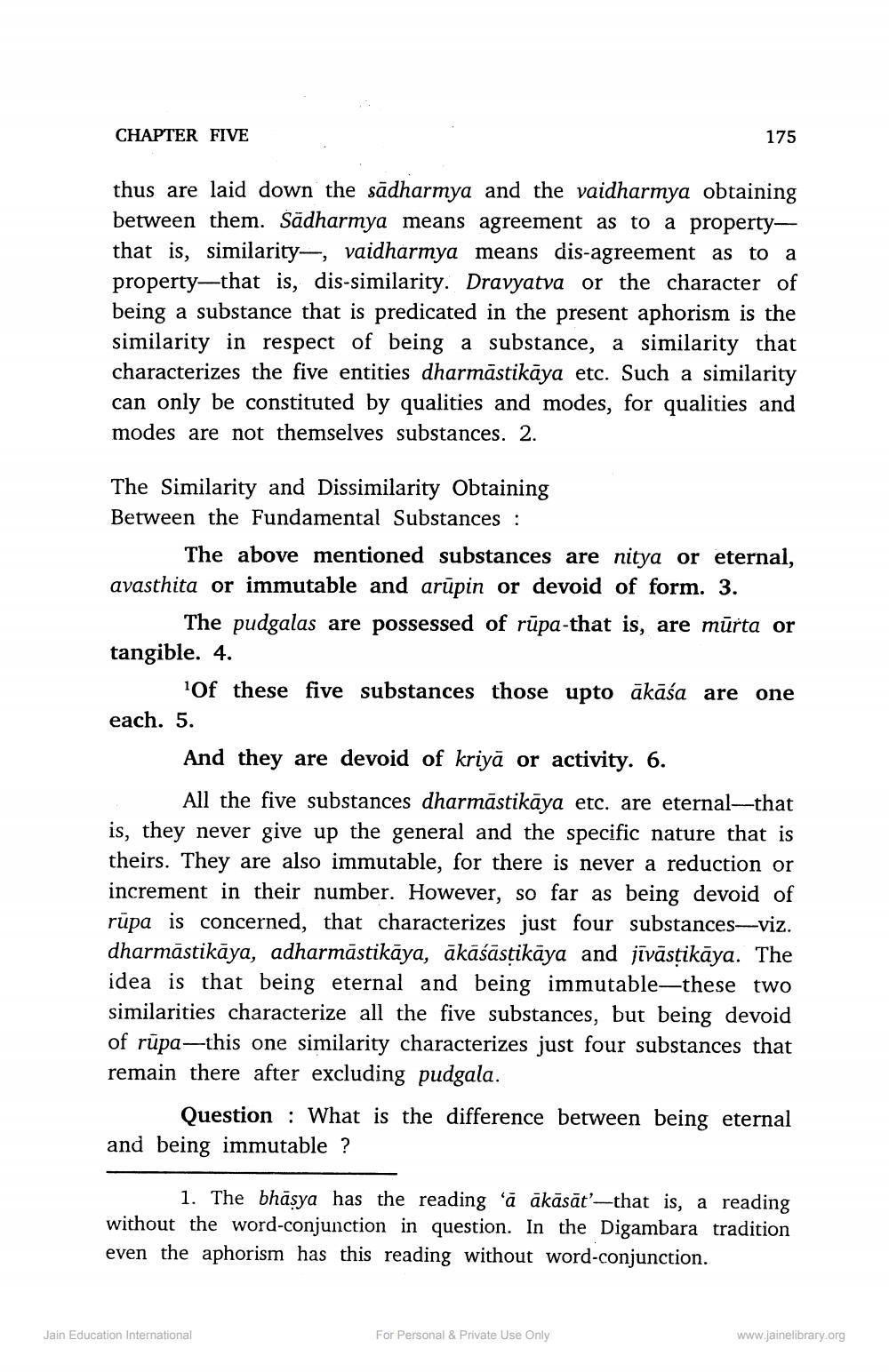________________
CHAPTER FIVE
175
thus are laid down the sādharmya and the vaidharmya obtaining between them. Sädharmya means agreement as to a propertythat is, similarity—, vaidharmya means dis-agreement as to a property—that is, dis-similarity. Dravyatva or the character of being a substance that is predicated in the present aphorism is the similarity in respect of being a substance, a similarity that characterizes the five entities dharmāstikāya etc. Such a similarity can only be constituted by qualities and modes, for qualities and modes are not themselves substances. 2.
The Similarity and Dissimilarity Obtaining Between the Fundamental Substances :
The above mentioned substances are nitya or eternal, avasthita or immutable and arūpin or devoid of form. 3.
The pudgalas are possessed of rūpa-that is, are mūrta or tangible. 4.
Of these five substances those upto ākāśa are one each. 5.
And they are devoid of kriyā or activity. 6.
All the five substances dharmāstikāya etc. are eternal--that is, they never give up the general and the specific nature that is theirs. They are also immutable, for there is never a reduction or increment in their number. However, so far as being devoid of rūpa is concerned, that characterizes just four substances-viz. dharmāstikāya, adharmāstikāya, ākāśāstikāya and jīvāsţikāya. The idea is that being eternal and being immutable—these two similarities characterize all the five substances, but being devoid of rūpa—this one similarity characterizes just four substances that remain there after excluding pudgala.
Question : What is the difference between being eternal and being immutable ?
1. The bhāsya has the reading 'ā ākāsāt'--that is, a reading without the word-conjunction in question. In the Digambara tradition even the aphorism has this reading without word-conjunction.
Jain Education International
For Personal & Private Use Only
www.jainelibrary.org




